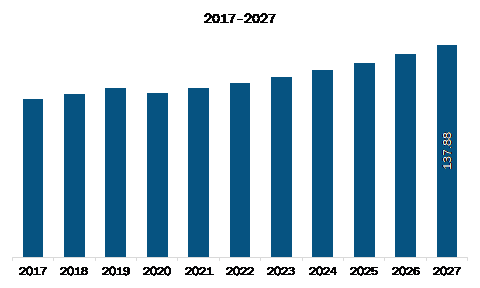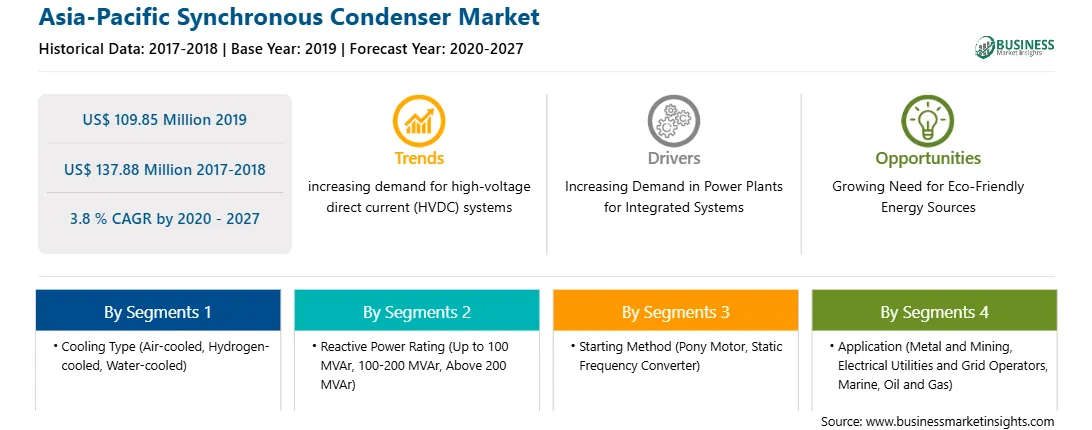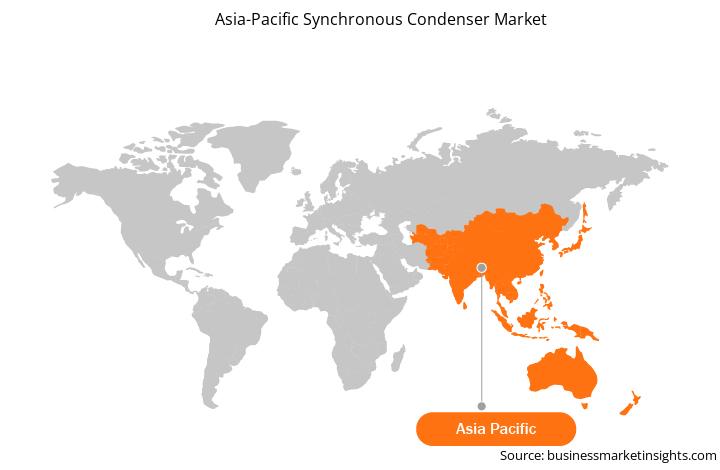The presence of emerging economies and rise in the adoption of innovative and advanced technologies are contributing to the overall development of the APAC region. Rapid industrialization and urbanization across the countries in the region are creating high demand for energy and power, thereby fueling the adoption of synchronous condenser to meet the rising demand of end users. Rising favorable government initiatives related to non-conventional energy across the region is also fueling the investment in the market. For instance, according to data published by the Department for Promotion of Industry and Internal Trade (DPIIT), the foreign direct investments received by India in the non-conventional energy sector was amounted to about US$ 9.56 billion during April 2000–June 2020. Additionally, fresh investments in the energy sector across the country have also been observed which amounted to US$ 11.1 billion since 2014. Similarly, Australia has experienced a rise in investment on generation of renewable energy over the years. According to Clean Energy Council (CEC), in 2019, Australia received Foreign Direct Investment from global players of the market of US$ 4.3 billion for the energy sector, facilitating the installation of solar rooftop across the country. Thus, the rising investment by the APAC countries in non-conventional energy is influencing the demand for synchronous condenser across the region.
Moreover, in case of COVID-19, APAC is highly affected specially China. Because of a massive number of cases in China, the APAC region is greatly affected by COVID-19, the country also homes the largest population across the world, thereby imposing greater risk of a large number of individuals; it is also a world leader of many global brands. According to the Organization for Economic Co-operation and Development (OECD), the pandemic has also affected other major economies outside China, such as the large India, Australia and Japan, and is experiencing downward inflation. The sudden closedown of all economic activities which includes manufacturing plants of both essential products and luxurious items has impacted the overall economy of the countries in the region. China being the manufacturing hub of the world has many major players and distributers located in the country. The temporary shutdown of supply chain to both local and global manufacturers of the condensers is expected to negatively impact the market. Additionally, the reduction in demand of power by 25-30% has been observed across countries like India. This decrease in demand, combined with decreased collection and slow recovery, would have a negative effect on the synchronous market across the region is also expected to adversely impact the demand for synchronous condenser in the region.

Strategic insights for the Asia-Pacific Synchronous Condenser provides data-driven analysis of the industry landscape, including current trends, key players, and regional nuances. These insights offer actionable recommendations, enabling readers to differentiate themselves from competitors by identifying untapped segments or developing unique value propositions. Leveraging data analytics, these insights help industry players anticipate the market shifts, whether investors, manufacturers, or other stakeholders. A future-oriented perspective is essential, helping stakeholders anticipate market shifts and position themselves for long-term success in this dynamic region. Ultimately, effective strategic insights empower readers to make informed decisions that drive profitability and achieve their business objectives within the market.

| Report Attribute | Details |
|---|---|
| Market size in 2019 | US$ 109.85 Million |
| Market Size by 2027 | US$ 137.88 Million |
| CAGR (2020 - 2027) | 3.8 % |
| Historical Data | 2017-2018 |
| Forecast period | 2020-2027 |
| Segments Covered |
By Cooling Type
|
| Regions and Countries Covered | Asia-Pacific
|
| Market leaders and key company profiles |
|
The geographic scope of the Asia-Pacific Synchronous Condenser refers to the specific areas in which a business operates and competes. Understanding local distinctions, such as diverse consumer preferences (e.g., demand for specific plug types or battery backup durations), varying economic conditions, and regulatory environments, is crucial for tailoring strategies to specific markets. Businesses can expand their reach by identifying underserved areas or adapting their offerings to meet local demands. A clear market focus allows for more effective resource allocation, targeted marketing campaigns, and better positioning against local competitors, ultimately driving growth in those targeted areas.

The APAC synchronous condenser market is expected to grow from US$ 109.85 million in 2019 to US$ 137.88 million by 2027; it is estimated to grow at a CAGR of 3.8 % from 2020 to 2027. Escalating demand for renewable power generation is expected to accelerate the APAC synchronous condenser market. The potential for rising demand for renewable energy, combined with the electrification of transportation and increased involvement of oil and gas companies in the electricity value chain, is accelerating the convergence of the above-mentioned industries. Rising initiatives among states, cities, and utilities to pursue DE carbonization plans over the years are increasing the demand for renewable energy across the APAC. The energy production of most countries around the APAC has been dominated by fossil fuels since the industrial revolution. This significantly affects both the APAC climate and human health. The combustion of fossil fuels for electricity results in three-quarters of APAC greenhouse gas emissions. Fossil fuels are responsible for significant quantities of local air pollution. In order to reduce carbon dioxide emission across the APAC, the consumption of renewable energy has increased, leading to the high demand for the same. For instance, according to the International Renewable Energy Agency, the top APAC countries in terms of renewable power and electricity generation capacity are the China, Thailand, Japan, and India. Thus, rising investments in renewable power generation by major economies across the APAC are expected to influence the adoption of synchronous condensers.
In terms of cooling type, the hydrogen-cooled segment accounted for the largest share of the APAC synchronous condenser market in 2019. In terms of reactive power rating, the above 200 MVAr segment held a larger market share of the APAC synchronous condenser market in 2019. Similarly, in terms of starting method, the static frequency converter segment held a larger market share of the APAC synchronous condenser market in 2019. Further, the electrical utilities and grid operators segment held a larger share of the APAC synchronous condenser market based on application in 2019.
A few major primary and secondary sources referred to for preparing this report on the APAC synchronous condenser market are company websites, annual reports, financial reports, national government documents, and statistical database, among others. Major companies listed in the report are ABB Ltd.; Brush Group; Eaton Corporation plc; FUJI ELECTRIC CO., LTD.; General Electric Company; Siemens AG (Siemens Energy); Voith GmbH & Co. KGaA; WEG ELECTRIC CORP.
The Asia-Pacific Synchronous Condenser Market is valued at US$ 109.85 Million in 2019, it is projected to reach US$ 137.88 Million by 2027.
As per our report Asia-Pacific Synchronous Condenser Market, the market size is valued at US$ 109.85 Million in 2019, projecting it to reach US$ 137.88 Million by 2027. This translates to a CAGR of approximately 3.8 % during the forecast period.
The Asia-Pacific Synchronous Condenser Market report typically cover these key segments-
The historic period, base year, and forecast period can vary slightly depending on the specific market research report. However, for the Asia-Pacific Synchronous Condenser Market report:
The Asia-Pacific Synchronous Condenser Market is populated by several key players, each contributing to its growth and innovation. Some of the major players include:
The Asia-Pacific Synchronous Condenser Market report is valuable for diverse stakeholders, including:
Essentially, anyone involved in or considering involvement in the Asia-Pacific Synchronous Condenser Market value chain can benefit from the information contained in a comprehensive market report.